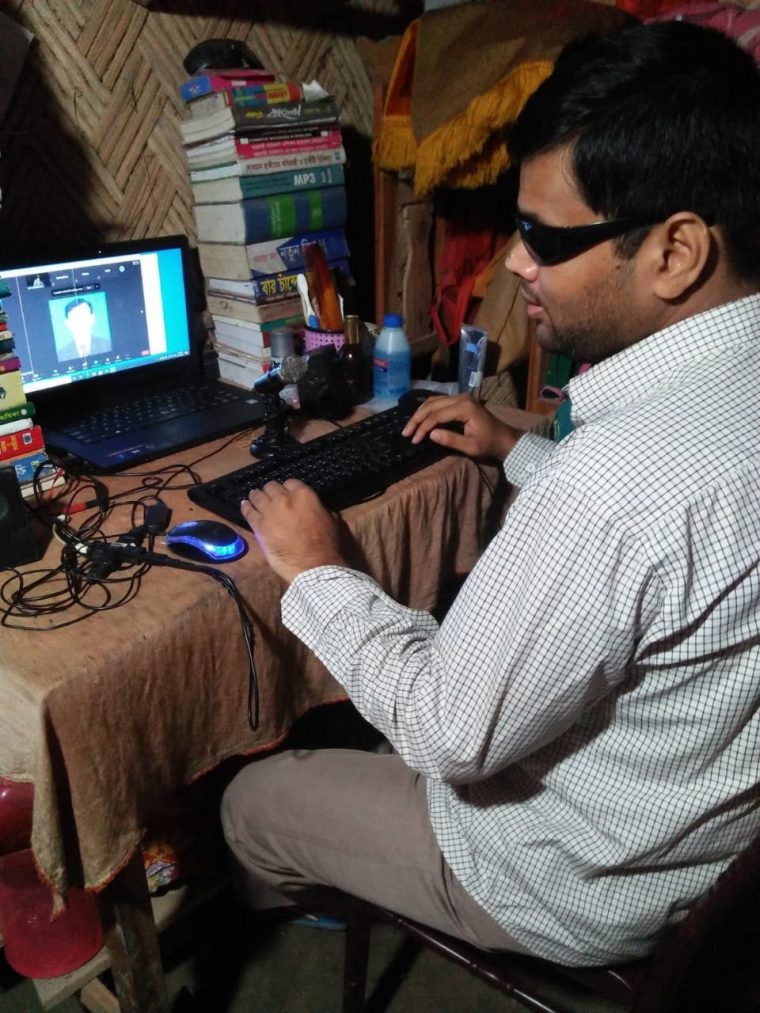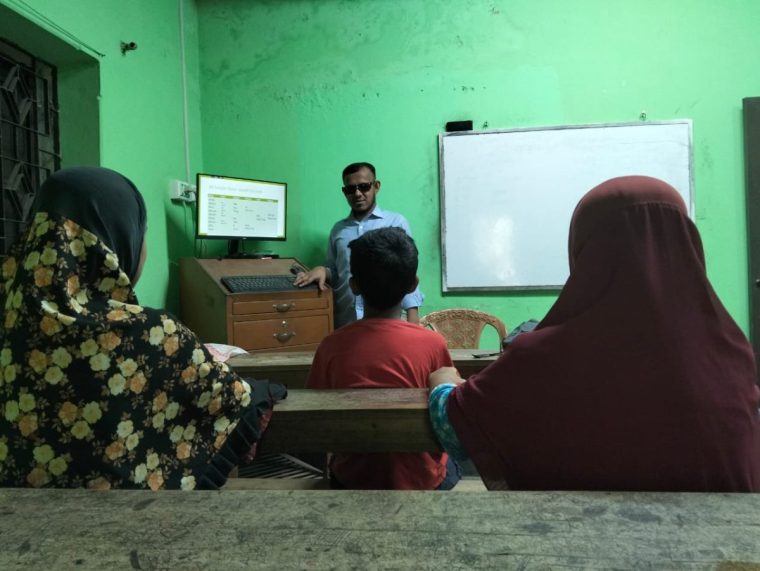Shahin Alam is helping hundreds to master tech. But he felt like he was ‘living in a grave’ when typhoid first took his vision
Shahin Alam speaks through a microphone, his laptop and keyboard nestled between stacks of books on his small wooden desk, as he talks to his online students from his home in Bangladesh.
But while his class listens attentively, few students take notes. They can barely see what’s on their screens because, like Alam, they are all visually impaired.
Alam, 28, offers free basic computer training to the partially sighted and blind, helping them to learn to operate a computer and browse the internet to improve their chances in Bangladesh’s job market, which can be unduly harsh on people with disabilities.
“Visually impaired people are often overlooked, and the government does not have adequate resources,” Alam told The i Paper. “So those with limited know-how must step up, otherwise they can’t empower themselves.”
In a country that has made huge technological progress, the demands of the workplace are changing so rapidly that the education system is struggling to keep pace. Not only has this had an adverse impact on people from rural and poverty-stricken areas, it has been especially tough on those with disabilities who have to deal with inadequate infrastructure, a lack of resources and limited facilities to support their needs.
While Alam had to learn to navigate his own education without his sight, he was not born blind. He gradually lost his vision after contracting typhoid at the age of 11. He recovered from the fever but by the time doctors realised the cause of the illness, it was too late to save his sight. By 13 his vision was gone.

“Talking about that experience still brings tears to my eyes,” he said. “It was scary accepting the reality that I’d have to live as a blind person. It felt like living in a grave, watching everything grow darker and darker. Up until I lost my vision completely, I still hoped my eyesight might come back.
“Once it was gone, the pain was life-altering, something words can’t fully capture.”
Alam was determined to pursue an education despite his disability, although he had to work harder than most to build his future. His childhood was spent in a remote village in the district of Jhenaidah, surrounded by endless emerald green crops but where clean water is scarce and medical care distant. He had to leave his family and friends to attend a government-run school for visually impaired children 40 miles from his home.
More than half of children with disabilities in Bangladesh are not enrolled in any formal education, according to the government’s 2021 National Survey on Persons with Disabilities. Among children with disabilities between the ages of five and 17, only 41 per cent were in primary school and only 24 per cent in secondary education.
Alam defied expectation and excelled academically, however. He mastered Braille and aced his exams, progressing through school and college which he self-funded by giving private tuition along the way.
He enrolled at the University of Dhaka and studied political science. The university had a resource centre for the visually impaired.
But Alam soon realised that outside of Dhaka, there are limited computer training opportunities for visually impaired students. Once back in Jhenaidah, he found that digital literacy is an essential skill for many jobs in Bangladesh, and that people with disabilities were falling behind in what is already a ruthless job market. The 2021 survey revealed only a quarter (27 per cent) of people with disabilities of working age were employed.
“I kept thinking about how to bridge that gap,” Alam said. The opportunity came during the Covid-19 pandemic, when the country went into lockdown and all aspects of life became digital. For many, the ability to attend classes, work from home or stay connected depended on having access to a computer, and knowing how to use it.
“Everything went online, but visually impaired students were left behind because they didn’t know how to use computers,” he said.
He created a free computer training course for the visually impaired and has since taught more than 400 people from Bangladesh and India. One of his students was Mohtasim Billah, 40, an English teacher from Birampur in northern Bangladesh, who was diagnosed with retinitis pigmentosa, which causes progressive vision loss. Billah runs a small English language centre, but around a dozen tuition and IT centres have popped up around him as demand for English proficiency grows.

With competition rife, Billah knew he needed to offer more than lessons taught with pen and paper. “After taking this course, I am fully able to operate a computer,” Billah said. “I create PowerPoints for my students, it helps me to teach.”
For Alam, Billah’s story proves why his work is so important: “Many people still believe blind people can’t work and are a burden. I started this project to prove them wrong.”
